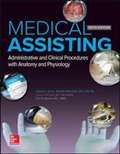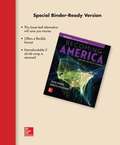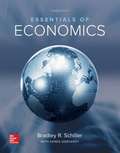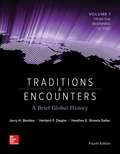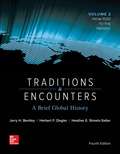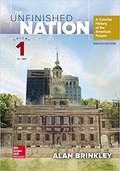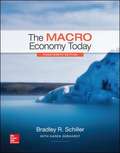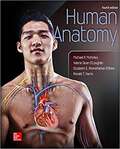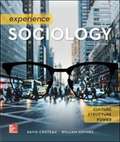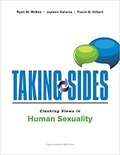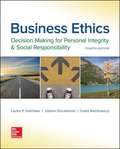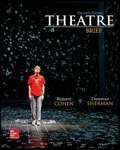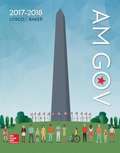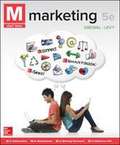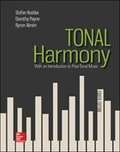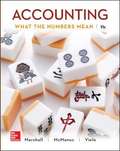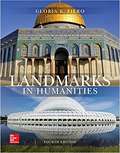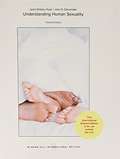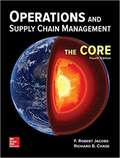- Table View
- List View
Medical Assisting: Administrative And Clinical Procedures With Anatomy And Physiology
by Kathryn A. Booth Terri D. Wyman Leesa WhickerThe medical assisting profession is soaring to new heights with the expansion and diversity of roles and changes in the healthcare environment. Today’s medical assistants must juggle many tasks in the medical office to keep up with the changes. The seventh edition of Medical Assisting:Administrative and Clinical Procedures with Anatomy and Physiology was updated to help students as well as instructors learn these ever-changing tasks and stay current in the healthcare environment.
Becoming America: A History for the 21st Century (Volume #2)
by David Henkin Rebecca MclennanSet for a new generation of students, with intergrated old and new learning styles to make the study interesting as well as to enhance the students' learning erxperience. It's innovated in a way that respects the need for chronology, narrative unity, social inclusiveness, and canonical coverage.
Essentials of Economics (Tenth Edition)
by Bradley Schiller Karen GebhardtWritten specifically for the one semester survey of economics course, Schiller's Essentials of Economics is known for seeking the best possible answers to the basic questions of WHAT, HOW, and FOR WHOM to produce. As in earlier editions, the tenth edition strives to arouse interest in economic theories by illustrating them in the context of actual institutions, policy debates, and global developments. Built to provide interactive support for the introductory student, Connect#65533; for the 10th edition features SmartBook#65533;'s adaptive reading experience embedded with learning resources as well as guided examples featuring coauthor Karen Gebhardt, among other resources.
iHealth An Interactive Framework
by Phillip B. Sparling Kerry J. RedicanCollated to help navigate the sea of available health and medical data so students can reach a higher level of health literacy and personal well-being. By tackling only the most essential topics, students spend less time memorizing and more time discussing and evaluating. Ultimately, it is critical thinking and communication skills that position us to make smart decisions about our health long into the future.
Foundations of Financial Management (Sixteenth Edition)
by Geoffrey A. Hirt Stanley B. Block Bartley R. DanielsenFoundations of Financial Management has built a loyal following due to its strong real-world emphasis, clear writing style, and step-by-step explanations that simplify difficult concepts. The text focuses on the "nuts and bolts" of finance with clear and thorough treatment of concepts and applications. In addition to completing the revisions, Block, Hirt, and Danielsen also revise all end of chapter problems and complete the solutions themselves. The authors know what works and what doesn't work for students, and they have consistently maintained a product that is responsive to the demands of the marketplace.
Traditions And Encounters: A Brief Global History
by Jerry H. Bentley Herbert F. Ziegler Heather E. Streets-SalterBased on Bentley and Ziegler's best-selling, comprehensive survey program, Traditions & Encounters: A Brief Global History provides a streamlined account of the cultures and interactions that have shaped world history. A focus on the human experience helps frame the broad scope of world history into a clear and concise learning experience for students. Bentley's engaging narrative is available as a digital SmartBook(tm), a personalized eBook that enhances understanding by asking students to demonstrate comprehension as they read. It is also supported by engaging digital tools, such as interactive maps, that encourage critical thinking and retention of key course concepts.
Volume 2: 1500 to the Present Traditions and Encounters A Brief Global History (Fourth Edition)
by Jerry H. Bentley Herbert F. Ziegler Heather E. Streets-SalterBased on Bentley and Ziegler's best-selling, comprehensive survey program, Traditions & Encounters: A Brief Global History provides a streamlined account of the cultures and interactions that have shaped world history. A focus on the human experience helps frame the broad scope of world history into a clear and concise learning experience for students.
The Unfinished Nation: A Concise History Of The American People Volume 2 From 1865
by Alan Brinkley Andrew Huebner Jon GiggieKnown for its clear narrative voice and impeccable scholarship, Alan Brinkley's best-selling program for the U. S. survey course invites students to think critically about the many forces that continually create the Unfinished Nation that is the United States. In a concise but wide-ranging narrative, Brinkley shows the diversity and complexity of the nation and our understanding of its history--one that continues to evolve both in the events of the present and in our reexamination of new evidence and perspectives on the past. This edition features a series of Patterns of Popular Culture essays, as well as expanded coverage of pre-Columbian America, new America in the World essays, and updated coverage of recent events and developments that demonstrates how a new generation continues to shape the American story. Connect is the only integrated learning system that empowers students by continuously adapting to deliver precisely what they need, when they need it, and how they need it, so that your class time is more engaging and effective.
The Unfinished Nation: A Concise History of the American People
by Alan BrinkleyKnown for its balanced voice and approachable scholarship, Alan Brinkley's best-selling The Unfinished Nation offers a concise, yet thorough survey of American History appropriate for students at all levels. The 8th edition features new scholarship and updated discussions, most significantly on the topics of War, American Imperialism, and Globalization. <P><P>Brinkley’s accessible narrative is available as a digital SmartBookTM,a personalized eBook that enhances understanding by asking students to demonstrate comprehension as they read. It is also supported by engaging digital tools, such as interactive maps, that encourage critical thinking and retention of key course concepts.
The Macro Economy Today (Fourteenth Edition)
by Bradley R. Schiller Karen GebhardtThe Macro Economy Today is noted for three great strengths: readability, policy orientation, and pedagogy. The accessible writing style engages students and brings some of the excitement of domestic and global economic news into the classroom. Schiller emphasizes how policymakers must choose between government intervention and market reliance to resolve the core issues of what, how, and for whom to produce. This strategic choice is highlighted throughout the full range of micro, macro, and international issues, and every chapter ends with a policy issue that emphasizes the markets vs. government dilemma. The authors teach economics in a relevant context, filling chapters with the real facts and applications of economic life. Schiller is also the only principles text that presents all macro theory in the single consistent context of the AS/AD framework. The Macro Economy Today, fourteenth edition, is thoroughly integrated with the adaptive digital tools available in McGraw-Hill’s LearnSmart Advantage Suite, proven to increase student engagement and success in the course.
The Science of Psychology (Third Edition)
by Laura A. KingFocusing on why things go right, The Science of Psychology: An Appreciative View, Third Edition, helps students understand and appreciate psychology as a science and as an integrated whole. The third edition's program extends the themes and enhances the pedagogical value by guiding students toward topics they find the most challenging and then offering new learning resources to help students master them.
Global Environment of Business
by J. Michael Geringer Michael S. Minor Jeanne M. McnettGlobal Environment of Business; Covers the following topics; The Challenging World of International Business International Trade and Investment Labor Forces International Competitive Strategy Marketing Internationally Global Operations and Supply Chain Management
Human Anatomy
by Valerie O'Loughlin Michael McKinley Ronald Harris Elizabeth Pennefather-O'BrienWith its unrivaled art program and accessible writing style, McKinley et al.'s Human Anatomy stands apart from other anatomy texts. High-quality photographs paired with brilliantly rendered illustrations help students visualize, understand, and appreciate the wonders of human anatomy. <p><p> The author team incorporates their over seventy years of teaching experience into student-friendly Learning Strategies, Clinical View boxes, and progressive question sets that motivate students to internalize and apply what they've learned. Users who purchase Connect Plus receive access to the full online eBook version of the textbook, as well full access to LearnSmart, SmartBook, and Anatomy & Physiology Ӏ REVEALED.
Experience Sociology
by David Croteau William HoynesExperience Sociology has set the new standard for teaching Introductory Sociology. Approaching sociology through the key concepts of culture, structure, and power, the program enables students to see sociology everywhere, and make the familiar new. Presented in an accessible and engaging way that brings theory and sociological concepts together, students move beyond their individual perspective to gain a true sociological perspective. Connect, the proven online experience, adapts to the student’s learning needs, enhancing the understanding of topics and developing their sociological imagination.
Taking Sides: Clashing Views In Human Sexuality (Taking Sides)
by Ryan W. McKee Tracie Q. Gilbert Jayleen GalarzaThe Taking Sides Collection on McGraw-Hill Create™ includes current controversial issues in a debate-style format designed to stimulate student interest and develop critical thinking skills. This Collection contains a multitude of current and classic issues to enhance and customize your course. <p><p> You can browse the entire Taking Sides Collection on Create or you can search by topic, author, or keywords. Each Taking Sides issue is thoughtfully framed with Learning Outcomes, an Issue Summary, an Introduction, and an "Exploring the Issue" section featuring Critical Thinking and Reflection, Is There Common Ground?, Additional Resources, and Internet References. Go to the Taking Sides Collection on McGraw-Hill Create™ at www.mcgrawhillcreate.com/takingsides and click on "Explore this Collection" to browse the entire Collection. Select individual Taking Sides issues to enhance your course, or access and select the entire McKee/Gilbert/Galarza: Taking Sides: Clashing Views in Human Sexuality, 14/e book.
Business Ethics: Decision Making for Personal Integrity and Social Responsibility (Fourth Edition)
by Laura P. Hartman Chris MacDonald Joe DesJardinsThis textbook provides a comprehensive introduction to the ethical issues arising in business. It focuses on real-world ethical decision making at both the personal and policy levels and provides students with a decision-making process that can be used in any situation.
Your Health Today: Choices In A Changing Society
by David Rosenthal Sara Mackenzie Michael TeagueIt’s not just Personal! Your Health Today teaches personal health from a truly inclusive and socially responsible perspective. Enhanced by a unique set of digital learning tools, Your Health Today incorporates the individual, environmental, and broader social factors that impact our well-being, acting as a guide for healthy living in college and beyond.
Theatre Brief Eleventh Edition
by Robert Cohen Donovan ShermanRobert Cohen and Donovan Sherman's Theatre Brief, 11th Edition, continues to provide an insider's guide to the world of theatre, where students are given a front-row seat. This lively introduction to theatre offers equal measures of appreciation of theatrical arts, history of performance, and descriptions of the collaborative theatrical crafts. Coverage of design, acting, and directing, as well as photo essays, provide a behind-the-scenes look at professional theatre artists performing their craft. Play excerpts and outlines represent a wide range of theatrical achievement. Theatre Brief offers a vast updating of contemporary theatre in America and abroad.
Am Gov 2017-2018 (Fifth Edition)
by Ralph Baker Joseph LoscoDesigned with today's students in mind, AM GOV is a concise, magazine style program that teaches students how to think critically, and politically. With an emphasis on current events, AM GOV engages its readers through approachable content and digital tools that are proven to help students better understand and connect with the concepts and language used in the AM GOV course.
M: Marketing
by Dhruv Grewal Michael LevyM: Marketing is the most concise, impactful approach to Principles of Marketing on the market, with tightly integrated topics that explore both marketing fundamentals and new influencers, all in an engaging format that allows for easy classroom and assignment management. A robust suite of instructor resources and regularly updated Grewal/Levy author blog provide a steady stream of current, fresh ideas for the classroom.
Tonal Harmony
by Stefan Kostka Dorothy Payne Byron AlménFor a generation of professionals in the musical community, Tonal Harmony has provided a comprehensive, yet accessible and highly practical, set of tools for understanding music. With this new edition, twenty-first century technology meets a time-honored tradition. Now available in McGraw-Hill’s Connect® with SmartBook®, students are better equipped to understand and master the vocabulary of music efficiently,allowing them to move on more quickly to advanced musical skill-building.
Accounting: What the Numbers Mean
by David H. Marshall Wayne William McManus Daniel F. VieleAccounting has become known as the language of business. This new edition is written to meet the needs of those students who will not be accountants but who do need to understand accounting to learn the key language that embarks us in the business world. Marshall, the leading text in the Survey market, takes readers through the basics: what accounting information is, what it means, and how it is used. The authors help students succeed through clear and concise writing, a conceptual focus and unparalleled technology support. In using this text, students examine financial statements and discover what they do and do not communicate. This enables them to gain the crucial decision-making and problem-solving skills they need in order to succeed in a professional environment.
Landmarks in Humanities
by Gloria FieroLandmarks in Humanities is a single-volume survey of global culture designed to help students of humanities cultural history and history of the arts to understand and appreciate the relevance of historical works and ideas to their own daily lives. In chronological sequence Landmarks guides students on a journey of the most notable monuments of the human imagination and the most prominent ideas and issues that have shaped the course and character of the world’s cultures from prehistory to the present. The landmarks that mark this journey are the great works of their place and time and in some cases of all time.The text reflects the author's extensive background in the study of Humanities which has enabled her to craft a narrative that is at once brief and comprehensive giving students a thorough understanding of the interrelatedness of various modes of expression—art and architecture literature philosophy and music--without overwhelming them with detail. Each of the text's fifteen chapters is centered on a key idea related to the period being discussed and contains a series of valuable pedagogical features including timelines high-quality maps and boxed material. Each chapter also takes a unique cultural or historical point of view often through primary sources the stylistic relationship between two or more images and ideas or between text and image and contemporaneous non-Western cultural landmarks and cross-cultural influences.In this edition each chapter opens with “A First Look” at a landmark work that illustrates the key idea of the chapter and acts as a cultural guidepost to that chapter’s overarching theme. This new feature explains the artwork’s significance as a landmark in its own time as well as in ours.
Understanding Human Sexuality
by Janet S. HydeThis trusted text examines the biological, psychological, and sociological perspectives of human sexuality and provides practical information needed for everyday living, all with a firm grounding in research. The thoroughly revised thirteenth edition of Hyde, Understanding Human Sexuality, features a new emphasis on critical thinking skill development, with input from expert Diane Halpern to ensure clarity and accessibility for students. The author team features a unique combination of a psychologist and a sociologist, which gives this text a distinct interdisciplinary perspective.
Operations And Supply Chain Management: The Core
by Richard B. Chase F. Robert JacobsThe fourth edition of Operations and Supply Chain Management: The Core focuses on the important core concepts in the dynamic field of operations. Just as lava flows from the core of the earth, operations and supply chain management is the core of business. Material must flow through supply chain processes to create cash output and input. This new edition has an increased focus on supply chain analytics involving the analysis of data to better solve business problems. Connect is the only integrated learning system that empowers students by continuously adapting to deliver precisely what they need, when they need it, and how they need it, so that your class time is more engaging and effective
